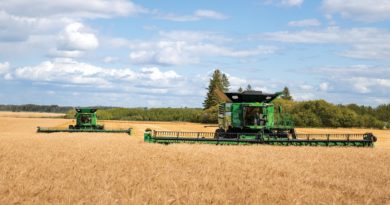#TipOfTheDay – 17/02/2022
Main Photo: shorturl.at/jlJ24
Record Keeping in an Agricultural Enterprise
Record Keeping keeps out guess work out of a farming enterprise. It is therefore not surprising that one of the first steps in being a successful farmer is keeping well-maintained, up to date record-keeping system.
Farm records are documents that are used to keep account of expenses incurred from farm operations that ultimately assist in financial planning decisions. The records are used to evaluate overall activities of the farm as well as to provide data to government policy makers and extension workers.
Record keeping helps to:
- identify which animals should be kept as replacements for breeding purpose or
- identify which animals should be culled from the breeding herd
- document pedigrees (relationships)
- market animals for a premium price
- monitor the progress of the project’s profit or losses
- generally help in decision-making

Types of Production Records
Production records can be in the form of a simple spreadsheet indicating, for example, month, crop type, planting and harvest date, livestock type, yield, the market delivered to and selling price per kg. Production records can also be more complex and include more detail. A few examples are listed below.
Crop cultivation records
This document can include all the various fields or orchard numbers, production size, yield potential and soil analyses of the land used for that specific crop or fruit.
Other items included in the crop cultivation records are fertilizations, seeding, cultivation methods, weed and pest control, time of application and crop yields.
Livestock production records
All information related to livestock farming should be included here. Examples are feed, medicine dosing, marketing costs and individual animal records such as milk production, calving records, wool production, weaning mass and weight gains.
The opening and closing numbers of livestock should be grouped according to their age and gender, for example, bulls, cows and one to two-year-old heifers.
Labour records
Labour matters such as service contracts of staff, wages received, rations, medical costs and worker’s compensation are recorded in the labour records. Other items that should be included are the number of labourers, loans, debts, leave and absences.
Machinery records
Machinery information is included in the machinery records and should include details such as model type, age, book value, repairs, service records, hours worked and insurance.
Records of Accounts
For proper financial recordkeeping on a farm, it is crucial to keep track of all income and expenditure on the farm. Keep individual records to record income and expenditure of every individual enterprise on the farm. For example, keep separate records for maize and potatoes.
A recordkeeping system is needed to calculate the net farm income and taxable income for a financial year, to analyse the cash flow, to create budgets for the future and to keep track of each product to ensure it is produced cost-effectively.
The sources from which the record accounts can be obtained include:
Bank statements.
Cash analysis book – include receipts and payments here.
Petty cash book – only cash transactions are recorded in this book.
Wage book – indicates wages paid, debts and repayments.
Deposit book – all cash receipts should be recorded here.
Proof of payment, credit vouchers and sales slips, statements, invoices and delivery slips
Additional Information obtained from : shorturl.at/mCPW1



